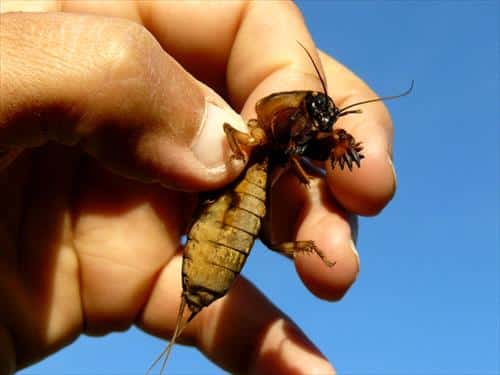Your Cart

Mole Cricket
What are Mole Crickets?

Mole Crickets have become one of the more destructive insect pests on turf lawns in the southern United States. They are found throughout the southeastern U.S. and can cause damage to all species of turf by tunnelling through the soil and feeding on the roots. Bahiagrass and Bermuda grass are more often affected by Mole Crickets although they can damage Centipede, St. Augustine and Zoysiagrass. Of the many known species of Mole Crickets three are known to cause serious damage to turf. All three of these species were introduced to the southern United States from South America likely travelling on ships in the late 1800s and early 1900s.
Life Cycle
Mole Crickets spend the winter as adults deep under the soil in tunnels. When the soil temperatures start to warm up in the spring and nighttime temperatures are above 60 degrees Fahrenheit, Mole Crickets will start to actively feed on turf grassroots. Mating will also begin in the early spring as males build special chambers to attract females by producing a long call or song. Both females and males can fly and can be found flying around outdoor lights during the night. After mating the females will lay their eggs in chambers that are 6-18 inches deep (depending on soil type). Females can lay 35-40 eggs per clutch and have several clutches producing in one year hundreds of offspring. After mating, the adults will usually die and few are left in June.
Once the eggs will hatch the nymphs will start feeding in late May-early June; however, some southern mole crickets can hatch as late as August. The nymphs resemble adults but lack any wings and are darker in color. Damage usually appears as light straw colored areas resembling drought stress.
Damage
Mole Crickets are so named for their tunnelling like there mammal counterparts. The extensive tunnelling breaks up the soil around the turf roots and the turf grass usually dies. Often the tunnelling produces mounds of soil that are considered unsightly by many homeowners. However, most of the damage to the turf occurs from the feeding of Mole Crickets Nymphs or it's young during the summer months. Heavy infestations at this period can result in large dead patches that look like drought damage as well as exposed soil.
Destructive Turf Insects H.D. Niemczyk, Ph.D. and D.J. Shetlar, Ph.D.
Management
Proper fertilization is extremely important and Weed Man's exclusive brand of granular slow-release fertilizer ensures that the turf remains healthy all year long. Adequate nitrogen levels will help the plant recover more quickly if it is thinned out. Proper watering is also important. Follow Weed Man's proper watering instructions to help prevent Mole Crickets on your turf! Ensure when the turf is mowed it is at the recommended mowing height for your turf species, and with a sharp mower blade when the turf is dry.
Your Local Weed Man Dealer Can Help
Your locally owned and operated Weed Man is a trained professional and will be able to recognize a Mole Crickets infestation and recommend a treatment to solve the problem. Weed Man uses only Government approved products at the correct time to be most effective in controlling this serious lawn pest. If you see at any time indications that you have a Mole Crickets problem Weed Man will inspect your property FREE OF CHARGE! Just call us! If you do have Mole Crickets we can help protect your healthy turf and recommend the right course of action to help eliminate or control this problem.
 English (USA)
English (USA) Français (CANADA)
Français (CANADA)